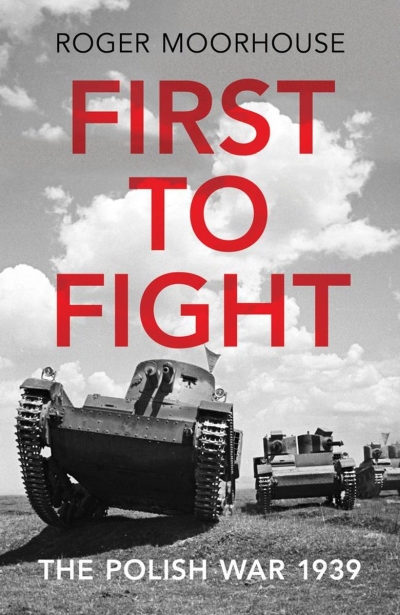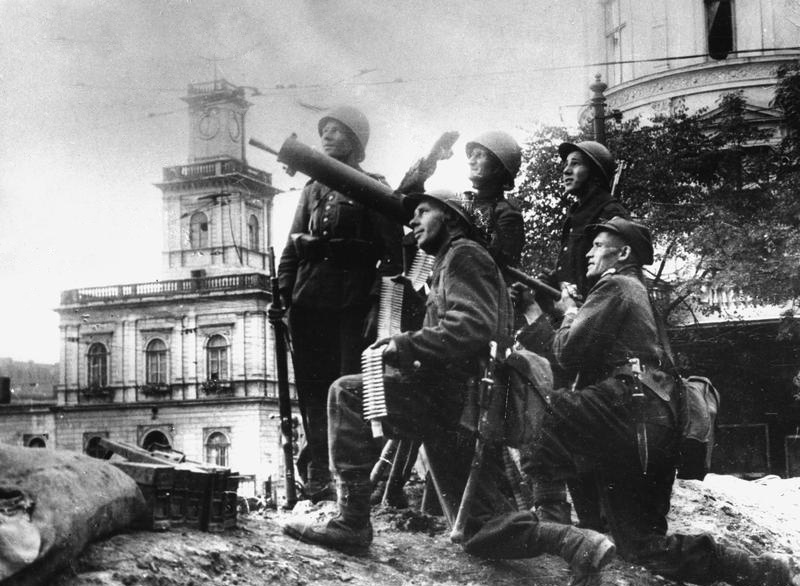| Title: | First to Fight - The Polish War 1939 |
| Writer: | Moorhouse, R. |
| Published: | Vintage Digital |
| Published in: | 2019 |
| Pages: | 400 |
| Language: | English |
| ISBN: | 9781847924612 |
| Description: | My great-grandfather was a Polish anti-aircraft officer who fought in the September 1939 Campaign, continued his struggle in France, and ended up being one of many Poles who would serve the 2nd Polish Corps under General Anders in Italy. So, imagine my surprise and excitement when I got word of a new book about the September Campaign of 1939, called First to Fight by acclaimed historian and author Roger Moorhouse. The book, as the author rightfully notes, fills in the blanks left by the absence in the last few decades of modern scholarship on Poland’s war of 1939, a war too frequently hastily summarized in footnotes, not much more of a prelude to ‘bigger things’. I imagine that writing on such subject, while most readers are drawn to the restless waters of Dunkirk and Normandy or the vast snowy forests of the Ardennes, must feel like an equivalent to pitching a new hand soap with so many other top-rated products loaded on shelves. To buy or not to buy? This is not a book about D-Day or the Bulge. This is a book about the war that started the Second World War, the war declared on Poland that pitched the mightiest geopolitical players of that time against each other, engulfing the world yet again in destructive flames. This book not only explains from a modern point of view (some say revised) how the events in Poland unraveled, but it also focuses on much needed context, frequently providing eye-witnesses reports to let the people who were there speak for themselves. These eye-witness reports are the book’s finest attribute. There were times when I was really drawn into the story that was being told. For instance, the ten-year-old Niusia Szewczykowna who wanted to learn English to thank the expected British liberators, who ultimately never came. Or the heartbreaking eye-account of the stunned Kazimiera Mika, already starting to feel the weight of the world coming down on her, while trying to wake up her dead sister, the latest victim of the relentless Luftwaffe. The events told through the eyes of army diarists, generals, common soldiers and bystanders in this book were equally instrumental in immersing the reader into that particular hot summer, reliving the tale of a nation abandoned, its heroic defenders, and the relentless Stuka dive bombings. The author not only covers all major and a few minor aspects of this war at great length and in detail, but he also explains why this war started in the first place. The occasional ‘off-site visits’ to meetings between government officials of neighboring countries while the war was raging are a fine addition in this story. The author also tries to correct numerous misconceptions about the Polish war in 1939, in some instances even disputing myths that are still today perceived as plausible. Shortcomings are hard to find in this book and are mainly found in what was left out instead of actual factual errors or misinterpretations. There are some aspects of the war that were largely ignored in this book, such as the marginalized role of the Polish Navy (summarized in a couple of sentences). At times, remembering my great-grandfather’s powerful stories about the bombardments, I also couldn’t help wondering why there was no mention of any anti-aircraft artillery efforts filling in as support when the Polish air force was lacking in air superiority. I also missed some other details, for example, more about the three Slovak divisions that crossed the southwest border, or the story of the immediate internment of the Polish forces who ultimately crossed the borders of neighboring countries to evade capture, as well as details of some other events between the lines that were barely touched in this book. There is also an undeniable strong sense of bias towards the Polish cause, which, although understandable, could have been more neutral. This book finally tells the untold story that should have been told long ago. Overall, First to Fight is a stunning book that certainly deserves to be read. |
| Rating: |     Very good Very good |
Information
- Article by:
- Kaj Metz
- Published on:
- 18-04-2020
- Last edit on:
- 03-05-2020
- Feedback?
- Send it!
Images
Related news
Roger Moorhouse wanted to bring Polish voices back into the narrative of the 1939 campaign
Roger Moorhouse is a historian and author specialising in modern German and Central European history, with particular interest in Nazi Germany, the Holocaust and World War Two in Europe. A visiting professor at the College of Europe in Warsaw, he is also the author of a number of books on modern German history, including Killing Hitler, Berlin at War, The Third Reich in 100 Objects and The Devils' Alliance. His latest book First to Fight: The Polish War 1939 - on the September Campaign that opened World War Two in Europe - was published in September 2019. We asked him some questions by e-mail about this book.




